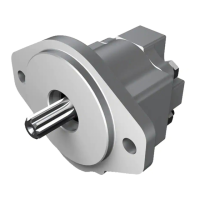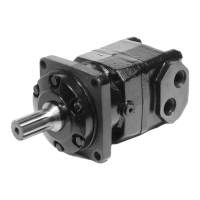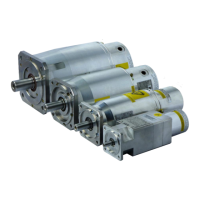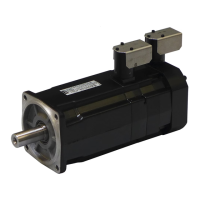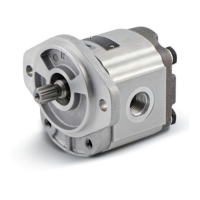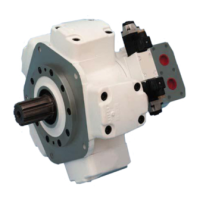- 82 –
18-06-08 PVD3668_GB_GVM_June_2018
4.5. Troubleshooting
We provide hereunder a symptom list in regard with their possible cause. This is not an
exhaustive list so in case of trouble, please refer to the associated inverter manual (the
diagnostic board indications will help you investigating) or contact us at:
http://www.parker.com/eme/repairservice.
You note that the
motor does not turn by
hand when the motor
is not connected to the
drive.
Check if the phases are not in short circuit.
Check if the rotor is externally blocked mechanically in
rotation.
You have difficulty
starting the motor or
making it run
If there is a thermal protector, check it and its connection
and how it is set in the drive.
Check the servomotor insulation (in doubt, measure when
the motor is hot and cold.
The minimum insulation resistance measured under 500VDC
max is 50 MΩ :
- Between phase wire and housing,
- Between thermal protector and housing,
- Between resolver winding and housing.
You find that the motor
speed is drifting
Adjust the inverter offset.
You notice that the
motor is racing
Check the speed set-point of the inverter.
Check you are well and truly in speed regulation (and not
in torque regulation).
Check the (feedback device) setting
Check the (feedback device) connections, the earth
connections (carefully) and the earthing of the earth wire,
the setting of the inverter.
Check the stability of the secondary voltages.
Check the rigidity of the frame and motor support.
Check motor fixing on its base.
Check the balancing.
Check the alignment between motor and load.
You find that the motor
is too noisy
Several possible explanations :
- Unsatisfactory mechanical balancing,
- Defective coupling,
- Loosening of several pieces,
- Poor adjustment of the inverter of the position loop:
check rotation with the loop open.
- Low drive switching frequency.
